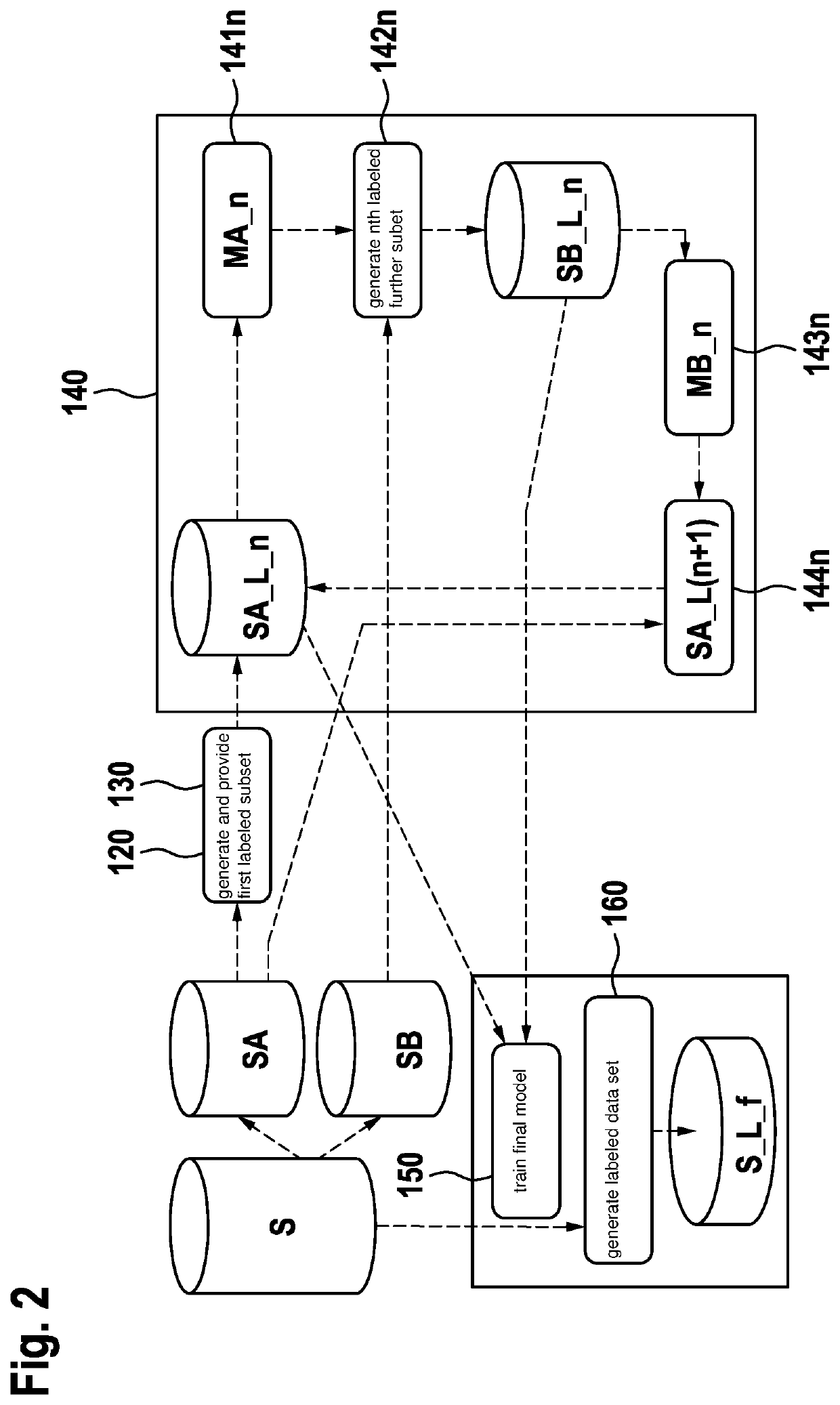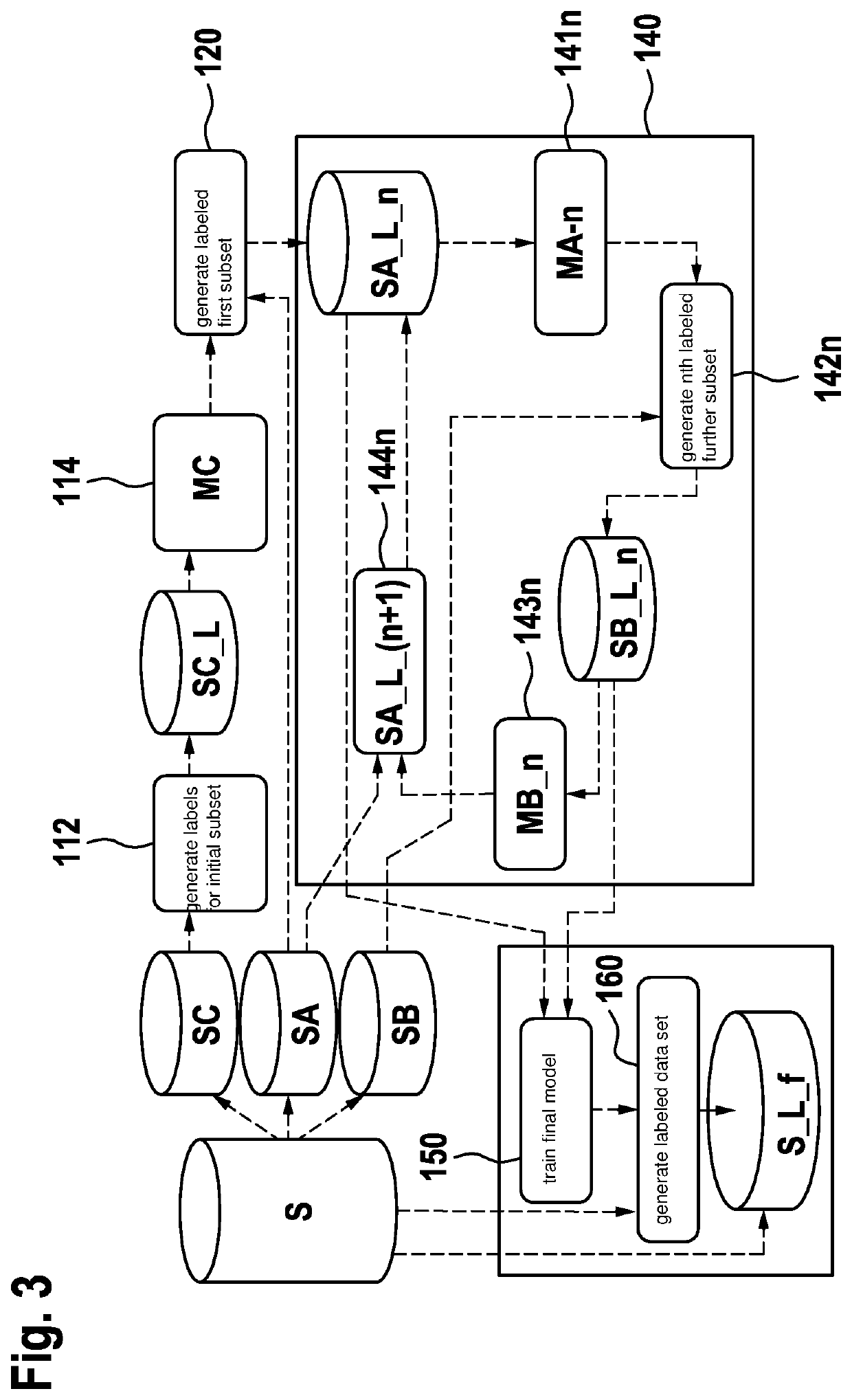Method for generating labeled data, in particular for training a neural network, by using unlabeled partitioned samples
a label generation and data technology, applied in the field of label generation, can solve the problems that the quality of labels may affect the recognition performance of the trained models of machine learning methods
- Summary
- Abstract
- Description
- Claims
- Application Information
AI Technical Summary
Benefits of technology
Problems solved by technology
Method used
Image
Examples
Embodiment Construction
[0061]FIG. 1 shows a schematic representation of steps of a method 100 for generating labels, in particular final labels L_f, for a data set S. The method 100 comprises the following steps:
a step 110 for providing the unlabeled data set S comprising a first subset SA of unlabeled data and at least one further subset SB of unlabeled data that is disjunctive with respect to the first subset;
a step 120 for generating a labeled first subset SA_L_1 by generating labels L_A_1 for the first subset SA,
and a step 130 for providing the labeled first subset SA_L_1 as the nth labeled first subset SA_L_n where n=1;
a step 140 for implementing an iterative process, an nth iteration of the iterative process comprising the following steps for every n=1, 2, 3, . . . N:
a step 141n for training a first model MA using the nth labeled first subset SA_L_n as the nth trained first model MA_n;
a step 142n for generating an nth labeled further subset SB_L_n by predicting labels L_B_n for the further subset SB...
PUM
 Login to View More
Login to View More Abstract
Description
Claims
Application Information
 Login to View More
Login to View More - R&D
- Intellectual Property
- Life Sciences
- Materials
- Tech Scout
- Unparalleled Data Quality
- Higher Quality Content
- 60% Fewer Hallucinations
Browse by: Latest US Patents, China's latest patents, Technical Efficacy Thesaurus, Application Domain, Technology Topic, Popular Technical Reports.
© 2025 PatSnap. All rights reserved.Legal|Privacy policy|Modern Slavery Act Transparency Statement|Sitemap|About US| Contact US: help@patsnap.com



